
The inflorescence in which a cupshaped involucre encloses a single female flower in the centre
(a) Various stages of capitulum development on a branch with an opened capitulum at anthesis showing ligulate florets. Inset: capitulum with the external bracts partially removed prior to.

Details of capitate inflorescence. (A) Complete inflorescence with... Download Scientific Diagram
The inflorescence is the arrangement of flowers in a cluster on the stem of various plants. Each of these arrangements has its specific name. The arrangement helps to facilitate sexual reproduction in various ways. In this article, we will provide detailed information about Inflorescence. Define Inflorescence
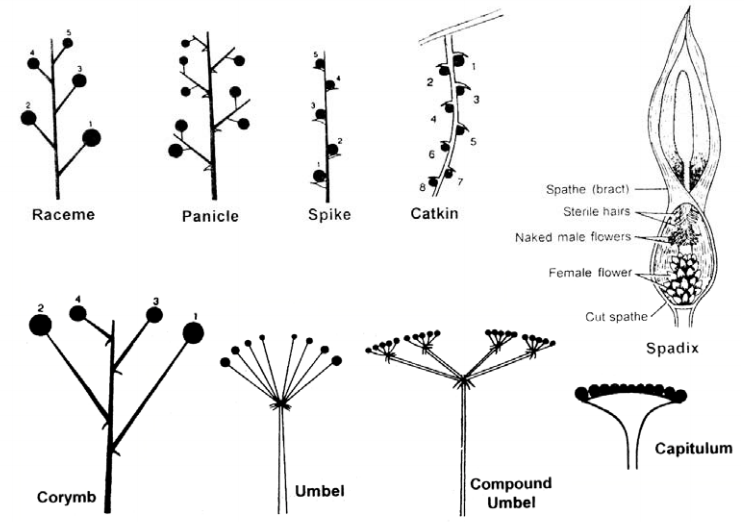
Racemose inflorescence Characteristics, Types, Example
The types are: 1. Solitary Flowers 2. Racemose Inflorescence 3. Cymose Inflorescence 4. Mixed Inflorescence 5. Special Inflorescence. Type # 1. Solitary Flowers: Flowers occur singly or are separated from other flowers of the same plant by vegetative regions. Solitary flowers are formed by direct transformation of shoot tips into flowers.

Inflorescence Classification, Types, Significance, Examples
Spike. Florets are sessile, attached directly to a central axis. Raceme. Similar in structure to a spike, but the florets have pedicels. Panicle. A branched raceme. Use the information above to identify the inflorescence types present in your lab. In the space below, make a sketch of each inflorescence type that will help you make these.

Capitulum Inflorescence (Lecture 13) In Hindi/Urdu. YouTube
Capitulum - Inflorescence axis is flattened to form a receptacle wherein ligulate ray florets and tubular disc florets develop in a centripetal manner. Example - Tridax. Sketch a diagram of a flower of every inflorescence. Label different parts after identification. Position of the ovary is noted corresponding to the floral parts.
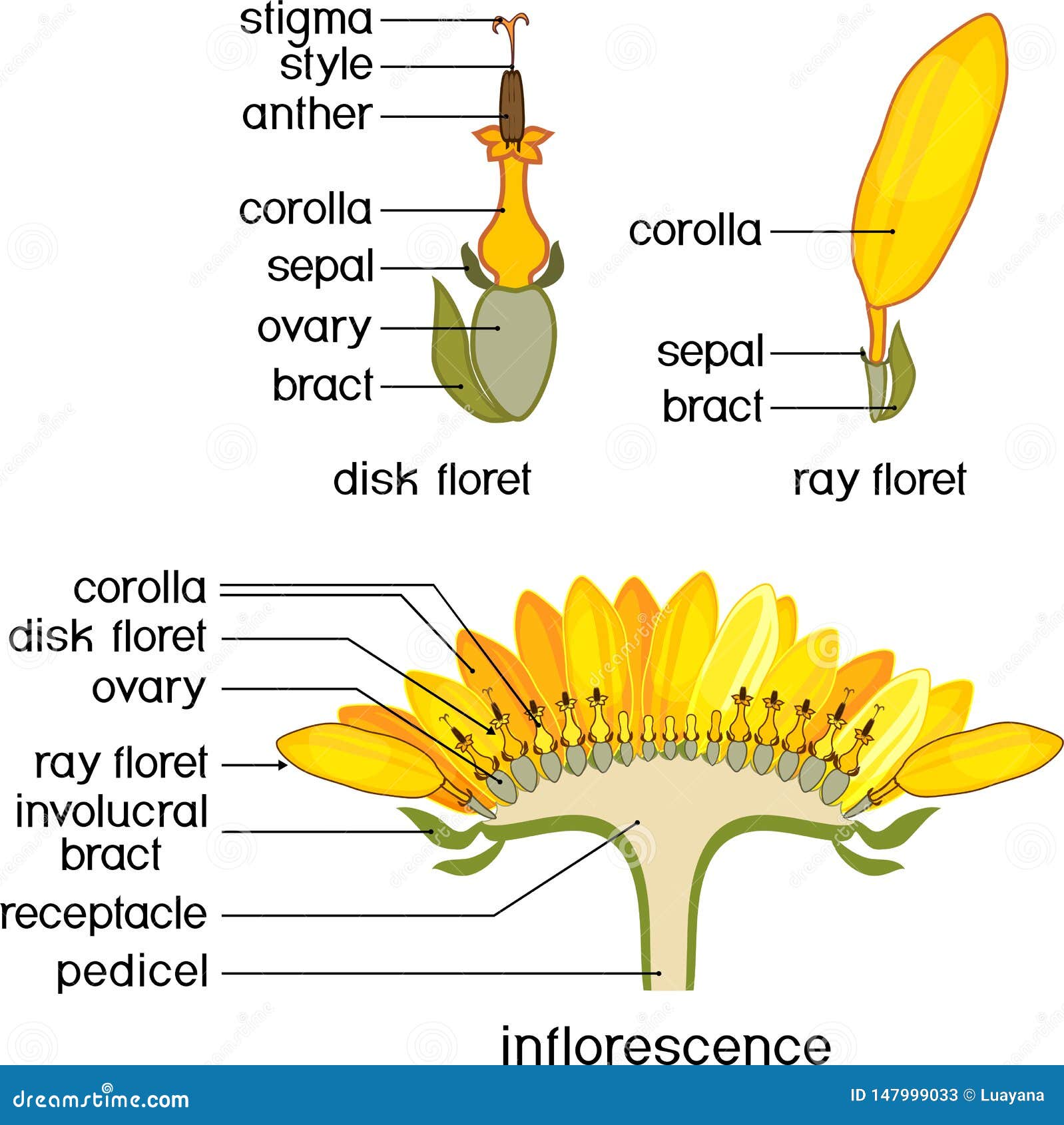
Structure Of Flower Of Sunflower In Cross Section. Diagram Of Flower Head Or Pseudanthium. Parts
An inflorescence consisting of a head of small closely packed stalkless flowers or florets arising at the same level on a flattened axis. The whole is surrounded or subtended by an * involucre of bracts and simulates, in appearance and function, a single large flower. The capitulum is typical of members of the family Compositae.

Mam, what is umbellate clusters in inflorescence Botany 16482177
Journal Article Floral development and evolution of capitulum structure in Anacyclus (Anthemideae, Asteraceae) M. Angélica Bello , Inés Álvarez , Rubén Torices , Javier Fuertes-Aguilar Annals of Botany, Volume 112, Issue 8, November 2013, Pages 1597-1612, https://doi.org/10.1093/aob/mcs301 Published: 02 January 2013 Article history PDF Split View

Plant Science (Botany) Multiple Questions and Answers
V. FLOWERS ALL ATTACHED AT THE SAME POINT(umbel and head/capitulum) An inflorescence in which several-many pedicellate (stalked) flowers are attached at the same point on a peducnle is called an UMBEL. The umbel is a fairly common inflorescence type. Simple umbels are produced by many clovers (genus Trifolium in Fabaceae, the legume family).

capitulum inflorescence ncert biology neet2023, 2ndgradescience YouTube
It is an aggregation or cluster of flowers displayed in a specific pattern for a particular plant species. The stem holding this whole reproductive portion of a plant is called a peduncle. The major axis above the peduncle called rachis bears the flowers or secondary branches.

A Question For The Lone Ranger Page 47 Freethought Forum
An indeterminate inflorescence may be a raceme, panicle, spike, catkin, corymb, umbel, spadix, or head. lily of the valley. A raceme of lily of the valley (Convallaria majalis). In a raceme a flower develops at the upper angle (axil) between the stem and branch of each leaf along a long, unbranched axis. Each flower is borne on a short stalk.
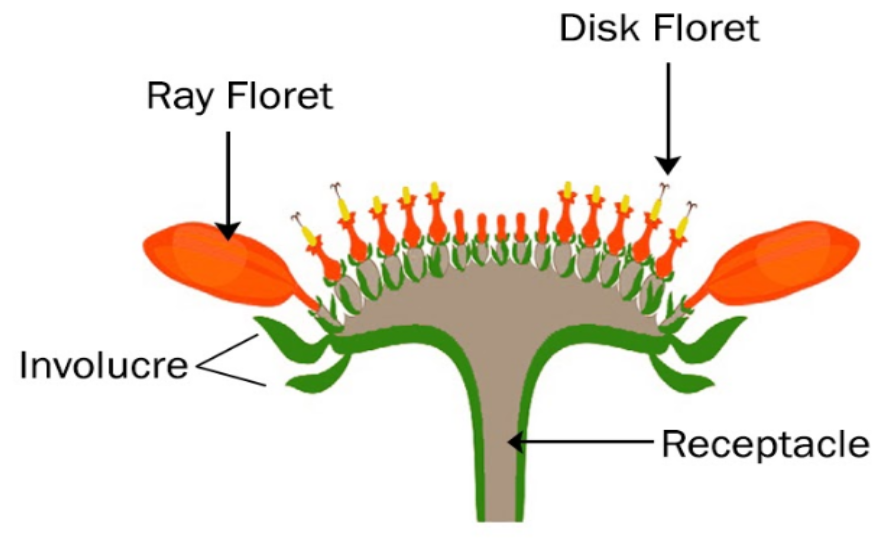
Capitulum inflorescence is seen inA) CruciferaeB) LiliaceaeC) CompositaeD) Solanaceae
Head (also called a composite or capitulum) Figure 8.4.3 8.4. 3: A dandelion head inflorescence. Each "petal" is actually composed of five fused petals of a single floret. The tube-like structures emerging upward are the styles, each with two curled stigma lobes. Because this inflorescence has no disc flowers, it is called a ligulate head.
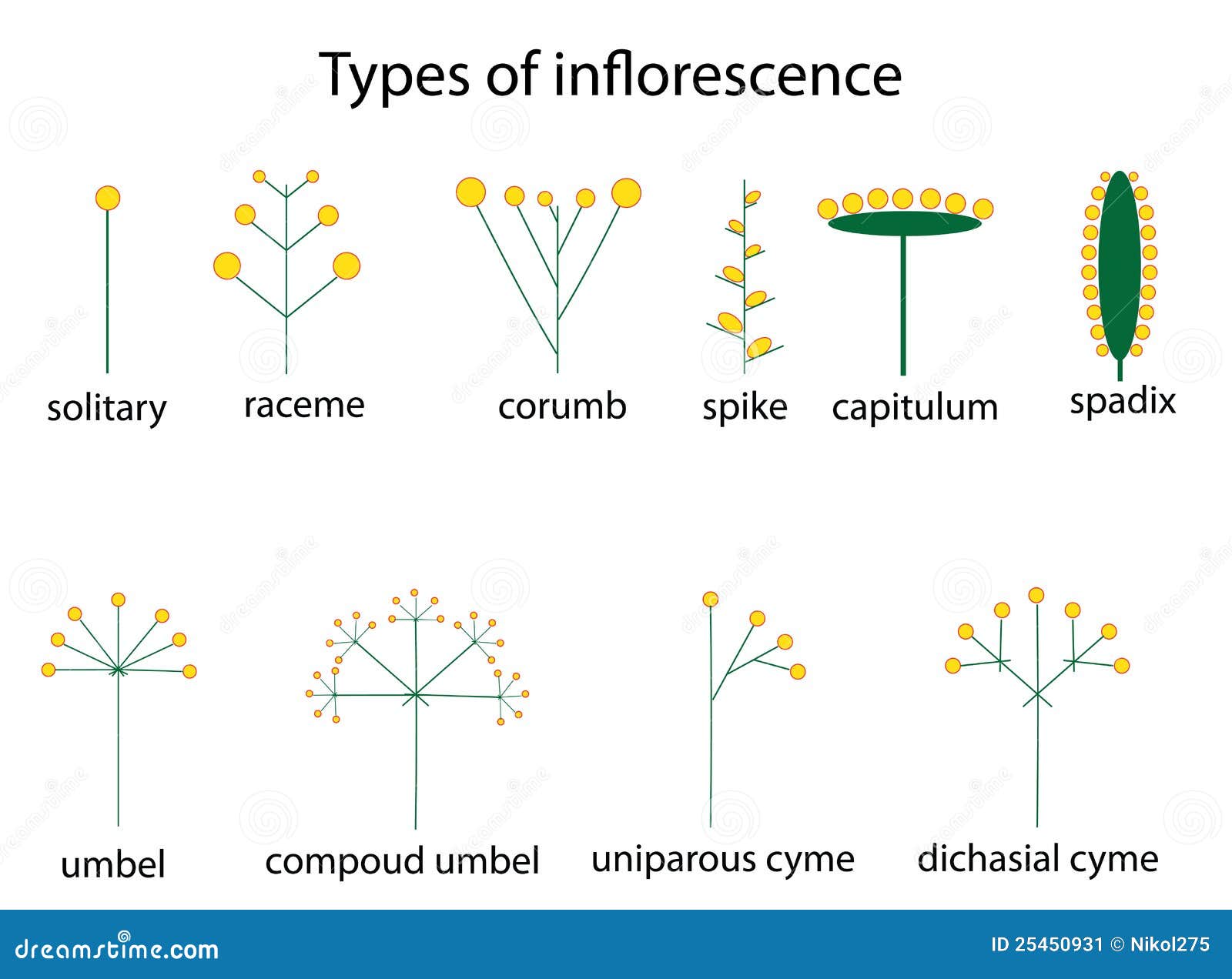
Types of inflorescence stock vector. Image of corumb 25450931
1. Raceme: When peduncle bears many pedicellate flowers in an acropetal manner, e.g., Delphiniumajacis, Veronica, etc. ADVERTISEMENTS: 2. Spike: A raceme with sessile flowers, e.g., Adhatoda vasica, Callistemon, etc.
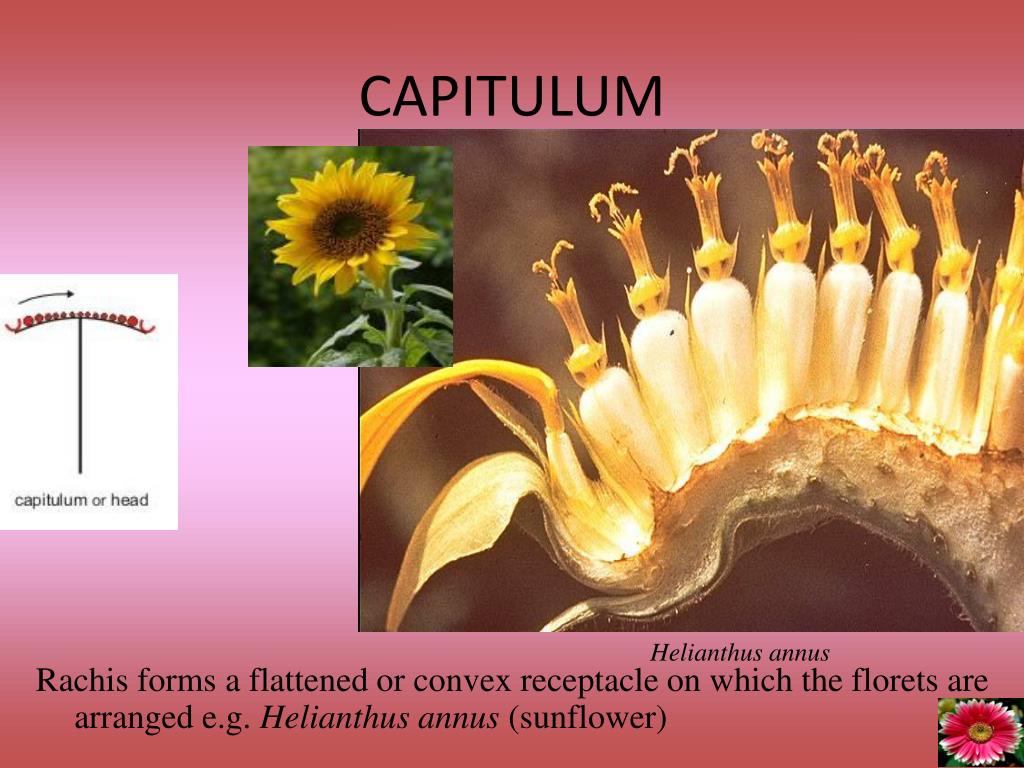
PPT FLOWER ARRANGEMENT ON FLORAL AXIS INFLORESCENCE PowerPoint Presentation ID3779368
The capitulum is a contracted raceme composed of numerous individual sessile flowers, called florets, all sharing the same receptacle. A set of bracts forms an involucre surrounding the base of the capitulum. These are called "phyllaries", or "involucral bracts". They may simulate the sepals of the pseudanthium.

The Inflorescence
A head (capitulum) is a short dense spike in which the flowers are borne directly on a broad, flat peduncle, giving the inflorescence the appearance of a single flower, as in the dandelion ( Taraxacum ). Read More In angiosperm: Inflorescences

An in situ overhead view of the inflorescence or capitulum of C. cyanus... Download Scientific
capitulum An inflorescence that consists of closely packed flowers or florets which have no stalks and arise on a flattened axis, all at the same level. The capitulum is surrounded or subtended by an involucre of bracts giving it the appearance of a single flower. Capitula are typical of the Compositae. A Dictionary of Plant Sciences MICHAEL ALLABY
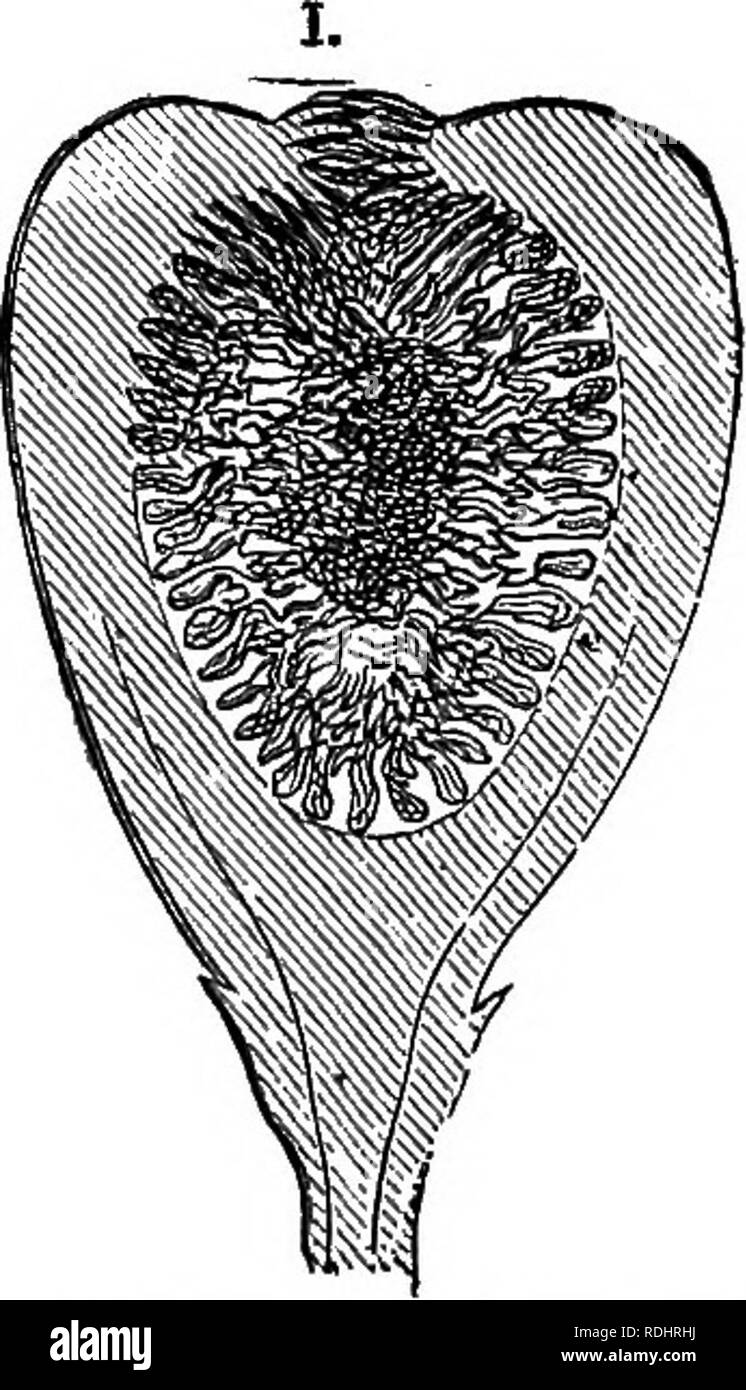
Inflorescence Capitulum Stock Photos & Inflorescence Capitulum Stock Images Alamy
The composite inflorescence, capitulum, or flower head in Asteraceae assembles multiple flowers into a single, highly compressed structure. It is a very effective reproductive unit and with an apparent selective value, considered to be the key innovation for diversification of this largest family of flowering plants.